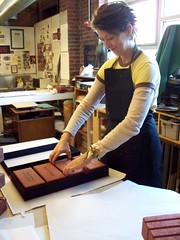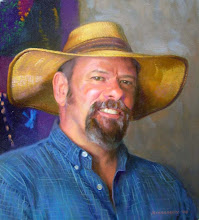“Iron Jawed Angels” Overview
The film “Iron Jawed Angels” follows the US women’s suffrage movement from 1912 – 1920, long after the death of Susan B. Anthony and Elizabeth Cady Stanton. From fiery beginnings, the US Women’s Suffrage movement had become complacent with a slow, state by state approach to reform in the early 20thcentury. The National American Women’s Suffrage Association (NAWSA) shunned the brasher British women’s suffrage movement, which was seen as too extreme in their tactics. Carrie Chapman Catt and Anna Howard Shaw, the leaders of NAWSA, preferred backroom political maneuvering over marching and picketing. The movie tells the story of two fiery college graduates—Alice Paul and Lucy Burns—who set out to start a DC chapter of the NAWSA and to organize a women’s voting rights march in Washington, D.C. To grab press attention, a robed suffragette dressed like a Greek goddess sat atop a white horse during their parade. Ms. Paul’s tactics got attention, created a firestorm of controversy, and money poured in. When the NAWSA headquarters wanted to take all of the money raised from the D.C. chapter, Paul and Burns started their own women’s voting rights party called the National Women’s Party (NWP).
Enraging many, the NWP started a campaign of around the clock picketing in front of the White House and slowly started to sway opinions about women’s suffrage. But when the U.S. entered the First World War in 1917, the protests were no longer tolerated and many NWP protesters were thrown in jail under the pretense of “obstructing traffic.” Men attacked them and many suffragettes were beaten up. Alice Paul insisted the picketing continue, and public scrutiny started to build. When Paul and Burns were eventually jailed for protesting, they went on hunger strikes and gained even more attention from the press. The women were severely mistreated in the Lorton (then called Occoquan) facility, and brutally force-fed. When major newspapers picked up the stories of the maltreatment, President Woodrow Wilson agreed to ask congress to pass the women’s voting rights amendment legislation in 1919. By 1920, the constitutional amendment passed through every state legislature, and through Tennessee by one vote. The title “Iron Jawed Angels” is derived from the nickname the suffragettes who took part in the hunger strikes were given, because they clamped their mouths shut and rejected the hard rubber feeding tubes (Weinstein 2004).
The Master Narrative and Women
Even though women have the babies, and perpetuate the human race, men run things. Our master narrative in this country assigns strict gender roles to boys and girls, and deviation is frowned upon. Part of our master narrative dictates that men should be aggressive, emotionally stronger, pushier, and more controlling. Women, as encouraged by our master narrative, are supposed to be more passive, calmer, more loving, and more nurturing. Women spent more than a third of this republic’s history without any voting rights.
The Master narrative assigns men and women different occupations. Men are prevalent in positions of power, the science and math occupations, and the mechanical arts. Women are caregivers, healers, teachers, and assistants. With these roles, the master narrative ensures that businesses can still control vast sums of money and power, wars can be waged and fought to protect these interests, and a dominant male white power group can maintain control.
The movie shows this narrative breaking down somewhat. Voting rights is power, and the “iron jawed angels” courageously grasped at and achieved political rights. Now, almost a century later, women still earn less than men, holding fewer positions of power, and expected to conform to traditional female roles. Some argue that it is because the master narrative keeps them form equalizing. I believe it is also women themselves, who are reluctant to change. Many women buy into the master narrative. I have a sister who was an avid reader and an early achiever in school. But became concerned about popularity, marrying, and having children. Two divorces later, she has two grown girls but she is locked in believing that men are her only way out. Her whole adult life has been male-dependant. I believe that my sister’s story is not unusual. Women are told, and ultimately believe that their lives depend on making strategic relationships with men. This is true around the world. Fortunately, this is changing very slowly as women are taking control of their lives, and carving out their own destinies. Alice Paul and Lucy Burns are excellent examples of how women stopped waiting for men to decide for them.
New information
I learned so much from this movie. I knew that the house near the U.S. Supreme Court was a suffragette house, but had no idea about the history of Ms. Paul and Ms. Burns. I have held a Susan B. Anthony dollar in my hand, and observed her stern eyes looking back at me. I always assumed the suffrage story began and ended with Anthony. I learned very little from my high school textbooks about this movement--just the date 1920. I guess, like many boys, I was turned-off by the suffragette movement. My only recollection of the British women’s suffrage movement, so despised in the film by Catt and her NAWSA, was the comical mother in the 1960s Disney film Mary Poppins. I remember that Disney portrayed women seeking the vote as silly and buffoonish. For me, the significance of the actual history never broke through the sepia photos and grainy kinescope newsreels. That is why I liked the movie “Iron Jawed Angels” so much. Its modern soundtrack, fast editing, and great acting made the era and the women’s movement come alive. Knowing Wilson’s back story of anti Black feelings made me dislike him, and feel like he was a political opportunist when he gave the speech saying that the women’s vote is important to the war effort.
This film taught me that there was a progression of events that led to women gaining the right to vote. It showed me that at the turn of the century, Paul and Burns re-invigorated the struggle by breathing new life into it. By civilly disobeying, they were able to gain media attention to their cause. They were able, through hunger strikes, to ultimately sway the president’s opinion in their favor. All this was new information for me. I had no idea that the concept of hunger strikes went back that far. They preceded Gandhi with this tactic. I never dreamed that brave women utilized that strategy to gain voting rights.
The movie also set in motion for me the curiosity to see whether my notions about the differences between the sexes is real or biased. I went to Busboys and Poets and purchased the book Failing at Fairness: How Our Schools Cheat Girlsby Myra and David Sadker. The film “Iron Jawed Angels” was an excellent reminder that I am ignorant of not only the women’s suffrage movement, but women’s issues and educational issues regarding gender. It was a great call to arms for me.
The Challenges and Successes of Women Today
Conventional wisdom insists that women are simply wired differently than men. Television talk shows remind women that they are from “Venus” not “Mars” and that women should celebrate their differences and not question dominance by men. Educators are not directly addressing these misconceptions. Men clearly do not want to give up their dominant role. A male dominated media perpetuates the unjust laws that result in women not earning as much as men. The male dominated culture influences people to accept that girls should accept traditional roles as wives, nurturers and mothers, and stay away from traditionally male professions. I believe that this is the foremost challenge facing women today. Many women do not believe in their own equality. Many religions add fuel to this buy preaching that women are subservient to men and it is moral to accept that role.
Women also succumb to fear of non-conformity in marriage and sex roles. As Myra and David Sadker discuss in their book Failing at Fairness: How Our Schools Cheat Girls, adolescent girls are often victims of low self-esteem. They are more likely to care more about weight issues, and become obsessed with popularity, being pretty and fitting in. I believe that fashion and societal views of women as sex objects enhances this (Sadker & Sadker, 1995).
The future of the women’s movement is embodied in children. Education about gender roles has great impact on perceptions. Of the 23 leading teacher education texts devoted only 3% of their space to gender issues. Huge challenges face educators who want to investigate whether these differences are real or perceived, and how to best address them in education. Girls get the short end of the stick in curriculum too. In reading, 61 % of stories have male-centric characters, in Social studies, only 2.5% of space to gender issues. Few science textbooks mention female scientists contributions, besides occasional quaint mentions of Marie Curie or others (Zittelman & Sadker, 2002).
What are the successes of women today? The successes include a steady increase in women’s educational attainment and roles in traditionally male-dominated fields. According to the article “Helping Girls Succeed” by Denise Jobe (2002), “More girls than ever are attending college” (p.64). US census data shows that 1,000,000 more women than men had a high school education or higher in 2008. Although women lag slightly behind men in post-graduate degrees, they obtain more Bachelor’s degrees than men. Twice as many women have bachelor degrees as 20 years earlier. (Census, 2008). – “Over a work life, earnings for a worker with a bachelor's degree compared with one who had just a high school diploma increase by about $1 million.” This bodes well for increasingly more women than ever before (Census, 2008).
Paul and Burns would be heartened to know that 65% of women voted in national elections, compared with 62% of men. Fifteen percent of the active military is comprised of women, compared with 2% in 1950. Eighty-four percent of women use computers at home compared with 82% of men. This reverses the previous computer gender gap of the 1980s and 1990s (Census, 2006).
It is the job of every multiculturally competent teacher to realize the biases of the master narrative regarding women. Women have come a long way, but have so much further to go. By examining history and women’s role in society today, educators must attempt to even the playing field. Educators hidden inclination to re-enforce traditional gender roles and gender interests should be re-examined and changed by educators. For me, Alice Paul and Lucy Burns are excellent role models. They demonstrate how people can reject conformity and achieve the great and often elusive goal of equality.
References
Census Bureau (2008). Women’s history month 2006. U.S. Census Bureau News. February 22
[Press release] Retrieved online at: http://www.census.gov/Press-Release/www/
releases/archives/facts_for_features_special_editions/006232.html
Census Bureau. (2007). Educational attainment in the population 25 years and over by
Selected characteristics: 2008, Table 2, United States Census Bureau [Web Site]. Retrieved online athttp://www.census.gov/population/www/socdemo/
education/cps2008.html
Jobe, D. A. (2002) Helping girls succeed. Educational Leadership.January 2002, 64-66.
Sadker, M. Sadker D. (1995) Failing at fairness: How our Schools Cheat Girls. New York, NY:
Simon & Schuster.
Weinstein, P., (Producer) & Von Garnier, K., (Director). (2004). Iron Jawed Angels.[Motion
picture], United States: HBO Independent Productions.
Zittleman, K., Sadker, D. (2002) The unfinished gender revolution. Educational Leadership.
January 2002, 59-63.















